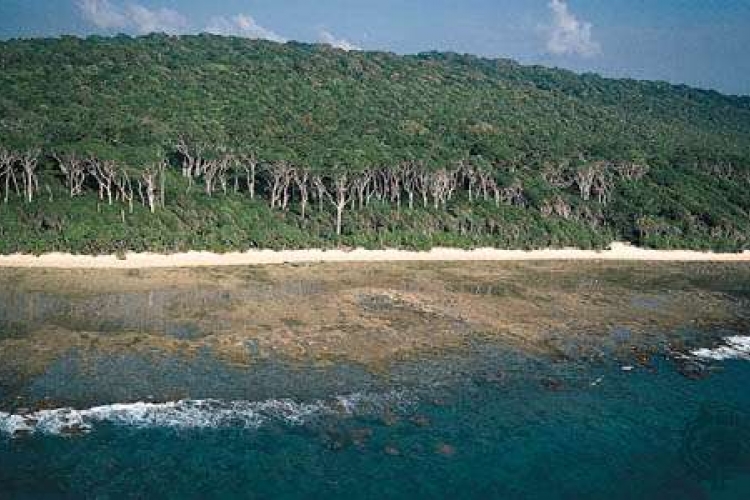CURBS IN ANDAMAN AGAIN
IN NEWS
The Chairman of the National Commission for Scheduled Tribes, Nand Kumar Sai, has said the Centre may like to revisit its decision to lift the Restricted Area Permit (RAP) system from 29 islands of Andaman and Nicobar, after the death of U.S. citizen John Allen Chau. The Restricted Area Permit regime was lifted this August from 29 islands, including North Sentinel, to promote tourism.
WHAT IS Restricted Area Permit (RAP)?
The Foreigners (Protected Areas) Order 1958 states that a Protected/Restricted Area Permit (PAP) is required for non-Indian citizens to visit certain areas in India (mainly in the North-East). Indian citizens do not need special permission to visit Restricted Areas.
Even though RAP was withdrawn, any tourist is required to take permission from the forest department and the administration of the Andamans as it is protected under two other acts -- protection of aboriginal people and forest acts.
Every foreigner, except citizen of Bhutan, who desires to enter and stay in protected or restricted area, is required to obtain special permit from competent authority having power to issue such permits to foreigner, seeking it.
Citizens of Afghanistan, China and Pakistan and foreign nationals of Pakistani origin are exception and are not allowed to enter such areas.
WHAT WAS THE ISSUE?
John Allen Chau, 27, was killed by members of the Sentinelese Tribes, possibly with arrows, when he tried to enter the North Sentinel Island, on November 17. Chau was murdered on the North Sentinel Island, which is part of the Andaman Islands, and seven people have been arrested in connection with the murder.
To develop tourism, the RAP regime, in place since 1963, was lifted around August this year from 29 islands, including the North Sentinel (where Chau was reportedly killed). Though the regime was withdrawn, a tourist is required to take permission from the Forest Department and the local administration as it is protected under two other Acts.
Facts on SENTILESE TRIBE
The Sentinelese are a negrito tribe who live on the North Sentinel Island of the Andamans. The inhabitants are connected to the Jarawa on the basis of physical, as well as linguistic similarities.
The Sentinelese is a sensitive tribe living in area for 60,000 years. They should not be contacted. They could be prone to diseases from outside world. The Coast Guard and Indian Navy carry out patrolling to prevent people from entering.
The 2011 Census of India counted 15 Sentinelese people on the North Sentinel Island. The numbers could be higher since the census was done from a distance. According to Survival International, a global rights group that campaigns for tribal people, the Sentinelese "vigorously reject" contact with the outside world.
The helicopters flew over the North Sentinel Island in order to assess the damage the Sentinelese may have suffered due to the tsunami. The extent of that damage -- if any -- still remains unknown.
The rights group also says that the Sentinelese survive by hunting or gathering food. The Sentinelese are also known to have the ability to build boats and fish in shallow waters.The Indian government has decided not to make any attempts to contact the Sentinelese (such attempts were made in the past).
With regard to Sentinelese tribes, the A&N Administration has adopted an ‘eyes-on and hands-off’ policy to ensure that no poachers enter into the island.
Occasional reconnaissance missions from boats anchored more than an arrow's throw away are carried out to check whether all is well with the Sentinelese.
PROTECTION OF TRIBAL AREAS
The Govt. of India issued the Andaman and Nicobar Islands (Protection of Aboriginal Tribes) Regulation, 1956 to declare the traditional areas occupied by the tribes as reserves. It prohibited entry of all persons except those with authorisation. Photographing or filming the tribe members is also an offence. The rules were amended later to enhance penalties.
TRIBES IN ANDAMAN AND NICOBAR
There are 6 aboriginal tribes in Andaman & Nicobar islands. On the basis of features, they can be divided into Negrito and Mongoloid. Great Andamanes Onge, Jarawa and Sentinelese are negrito while Nicobarese and Shompen are mongoloid. Shompens and Nicobarese seem to be descendents of primitive Malayans. These tribes still keep a separate entity and don;t cover their bodies. The tribal groups in the two respective regions have very little in common in the ethnic, linguistic or cultural sense. Their life styles are also very different.
NEHRU TRIBAL PANCHSHEEL POLICY
Jawaharlal Nehru [1889–1964, first Prime Minister of India] formulated the following five principles for the policy to be pursued vis-a-vis the tribals:
(1) People should develop along the lines of their own genius, and the imposition of alien values should be avoided.
(2) Tribal rights in land and forest should be respected.
(3) Teams of tribals should be trained in the work of administration and development.
(4) Tribal areas should not be over administered or overwhelmed with a multiplicity of schemes.
(5) Results should be judged not by statistics or the amount of money spent, but by the human character that is evolved.


 IAS -2025 Prelims Combined Mains Batch - III Starts - 14-04-2024
IAS -2025 Prelims Combined Mains Batch - III Starts - 14-04-2024